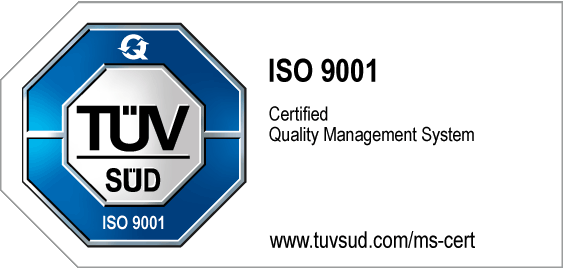Roadmapping – At a Glace
| Visual Planning Tool | Roadmapping is a strategic method for visually presenting long-term goals, milestones, and necessary steps. It is especially suited for complex projects and transformation processes. |
| 7-Step Approach | The roadmapping process includes goal definition, time planning, resource allocation, and visualization, complemented by continuous monitoring and adaptation. |
| Diverse Applications | Roadmaps are used in technology and product development, strategic planning, research, and IT – enhancing transparency and coordination across nearly all business areas. |
| Clear Added Value | Roadmaps boost efficiency, enable targeted resource use, and support agile responses to changing market conditions or strategic shifts. |
| More than Just Planning | Roadmapping also serves strategy evaluation by linking a company’s vision with measurable progress. |
Roadmapping: Definition
Roadmapping is a strategic method that helps align products, projects, or initiatives with long-term business objectives. It involves creating visually appealing timelines that outline key actions, goals, and dependencies.
Roadmaps provide clarity and coordination for teams, enabling better communication and alignment. In a fast-changing competitive landscape, roadmapping supports flexibility and strategic foresight. A roadmap based approach ensures structured progress and consistent focus across all levels of an organization.
Purpose and Objective of the Method
The purpose of the Roadmapping method is to align long-term goals with actionable steps in a clear and structured way. It enhances team collaboration by providing a shared vision and guiding priorities across departments.
Agile teams benefit from regularly updated strategy roadmaps that help them adapt to change while staying focused on overarching goals. Integrating customer feedback into the roadmap ensures that development remains user-centered and market-relevant.
Core Functions of the Method at a Glance:
- Strategic Planning: Development of a long-term overview of goals, actions, and stages.
- Milestone Visualization: Depiction of major project phases and decision points.
- Structuring Complex Processes: E.g., in business model or innovation strategy development.
- Efficient Resource Utilization: Identification and coordination of required means and expertise.
- Time Planning: Overview of timelines, dependencies, and sequences.
- Flexibility and Adaptability: Ability to respond to changes through regular updates.
- Coordination and Communication: Improved collaboration between teams or departments.
- Progress Monitoring: Clear orientation based on defined stages to track project advancement.
Application Areas of Roadmapping
Roadmapping can be applied in various areas such as innovation management , product development, and corporate strategy. A technology roadmap outlines future technology needs and capabilities, while a product roadmap focuses on features and releases aligned with the product vision.
A strategy roadmap helps leadership visualize long-term goals and key initiatives across business units. A common roadmap example would be using a roadmapping tool to coordinate development milestones across teams, ensuring alignment with market demands and strategic goals.
- Technology Development: A technology roadmap helps companies plan the development and implementation of new technologies and analyze their impact on products and markets.
- Product Development: Organizations use roadmaps to plan the launch of new products or services by visualizing development steps, market demands, and timelines.
- Strategic Planning: Roadmaps support the design of long-term business strategies, including investment planning, resource allocation, and partnerships.
- Research and Innovation: Research institutions use roadmapping to manage innovation processes and identify future research areas.
Conducting Roadmapping in 7 Steps
A systematic approach is essential for effective roadmapping. The following seven key steps summarize the process:
- Goal Definition: Define long-term goals or visions. Clarify what you want to achieve with the roadmap and identify specific target outcomes.
- Analysis of the Starting Point: Assess the current situation, including existing resources, challenges, and market conditions, to get a realistic understanding of the baseline.
- Identification of Milestones and Activities: Determine key milestones, steps, and actions needed to achieve the goals. Organize them logically and show their dependencies.
- Time Planning: Define timeframes for each milestone and activity. Create a timeline that visualizes the planned schedule and deadlines.
- Resource Allocation: Identify the required resources – such as personnel, budget, and technology – and assign them to the corresponding tasks and milestones.
- Visualization of the Roadmap: Create a visual representation of the roadmap that clearly displays goals, milestones, schedules, and resources. This may take the form of charts, tables, or timelines.
- Monitoring and Adjustment: Implement a monitoring process to track progress and review regularly whether adjustments are necessary. Modify the roadmap as needed based on changing conditions or new insights.
Overview of Different Types of Roadmaps
Roadmaps are versatile tools covering various aspects of planning and strategy development. Each type of roadmap serves a specific purpose and supports planning in a unique way.
Technology Roadmap
- Purpose: Planning and visualizing technological developments and innovations.
- Application: Used by companies to track progress in the development or integration of technologies and manage strategic investments. Helps maintain focus on long-term technological trends.
Product Roadmap
- Purpose: Structuring product development and launches.
- Application: Outlines planned features, versions, and release dates of a product. Ensures alignment with market needs and business goals.
Project Roadmap
- Purpose: Visualizing essential phases, milestones, and timelines of a project.
- Application: Ideal for detailed project planning and tracking. Helps monitor progress, identify risks, and ensure timely delivery of project goals.
Strategic Roadmap
- Purpose: Planning long-term strategic goals and the steps needed to achieve them.
- Application: Used to guide the strategic direction of a company over time and ensure alignment of actions with long-term objectives.
Market Roadmap
- Purpose: Analyzing and planning market developments and trends.
- Application: Helps anticipate future market conditions and develop strategies for market entry, growth, or adaptation. Especially useful for identifying and leveraging market opportunities.
Research Roadmap
- Purpose: Planning and coordination of research activities and projects.
- Application: Used by research institutions and companies to organize research goals, projects, and timelines. Optimizes resource allocation and ensures research is targeted and effective.
IT Roadmap:
- Purpose: Developing strategies and plans for IT systems and infrastructure.
- Application: Supports the planning and management of implementation and development of IT systems, software, and infrastructure. Helps align technology development with organizational IT needs.
Frequently asked questions and answers
Roadmapping is a strategic planning method used to outline goals, milestones, and actions over time. It often involves product roadmaps that visualize the development phase of products or services. Using roadmap templates helps teams align priorities, track progress, and communicate plans clearly.
Roadmapping focuses on the strategic direction and long-term vision, helping the development team and relevant stakeholders align on goals and priorities. In contrast, planning is more detailed and operational, guiding the day-to-day development efforts. While roadmapping supports high-level decisions and is often adapted in agile methodologies, planning breaks down tasks and timelines for immediate execution.
Project Roadmapping is a strategic process that outlines the vision, goals, and key milestones of a project over time. It often includes an agile roadmap that aligns the product strategy with the needs of internal teams and product teams. This approach helps teams prioritize features effectively and stay focused on delivering value throughout the project lifecycle.
Sources:
- Machate, Alexander: Zukunftsgestaltung durch Roadmapping, Dissertation, TU München, 2006
- Möhrle, M.G./Isenmann R. (Hrsg.): Technologie-Roadmapping, Springer Verlag, 2. wesentl. erw. Auflage 2005
- Pillkahn, Ulf (2007): Trends und Szenarien als Werkzeuge zur Strategieentwicklung, Erlangen
- Simon, Walter: Gabals großer Methodenkoffer Zukunft 2. Konzepte, Methoden, Instrumente, Gabal Verlag Offenbach 2011 13
- Z_punkt, Die Z_punkt Foresight Plattform, URL: http://zukunft-immittelstand.de (as of: 01.05.2011)


